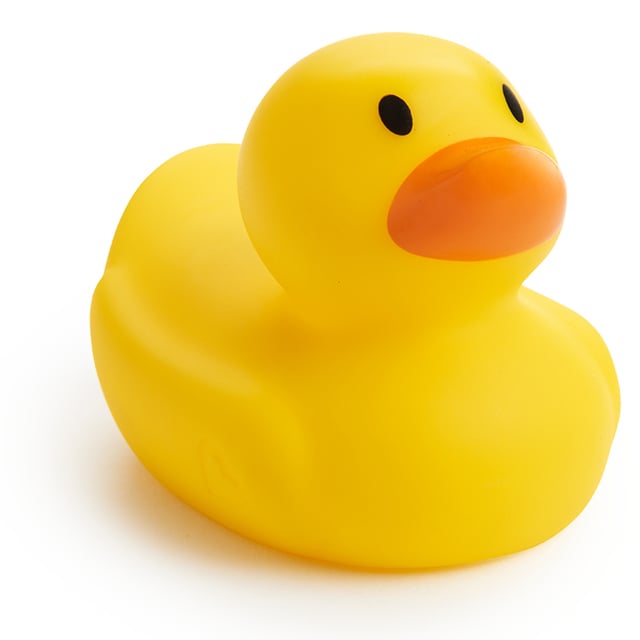What tricks do you have to keep warm?
Wool base layer, insulated mid layer, rain/windproof outer shell. They key here is too add/remove layers as needed, dictated by the weather and how active you’re being at the moment.
Should any of the layers be tighter or looser than the others? Like, do you want to size up?
You aren’t just heating up your own body w/ homeostasis, you’re heating up the air around you as it radiates off of your body. You will be warmer with tighter fitting clothes. Looser clothes can help with air flow, but if the air is -10°F air flow isn’t your friend.
Insulation is about trapping the air your body has warmed up next to your body, so you don’t need to constantly spend energy heating up cold air.
I’m not sure what sort of activity you’re planning on so I can’t give very good recommendations on exactly what to wear. But I would say just buy clothes that fit you. You probably shouldn’t be wearing so many thick layers that it requires you to go a size up.
Also keep in mind if you’re so warm you start to sweat, once you cool down that sweat is going to make you feel even colder.
Again wear wool, Merino wool if you can. Don’t wear cotton.
Quality comment right here.
Emphasizing what the other poster said, you don’t want to compress anything that traps air. Your best insulator, by far, is trapped air.
Proper mid to outer level layers are made to size so they fit on top of the lower levels
The only tight layer is the first.
My winter set up is:
First layer: tight top + bottom wool long johns (in sure there is a proper term for em, but it’s what we called em)
Second layer: loose wool onesie I got from Roots.
Third layer: loose sweat pants + hoodless sweater
Fourth layer: loose insulated work pants + work hoodie
Fifth layer: snow pants and jacket
This gets me through winter in Winnipeg and rarely do I get cold.
I work outside during all seasons.
In the winter…
Layers. Layers. Layers.
Top half:
- Undershirt(or not - depends on how cold).
- Thermal long sleeve.
- T-Shirt.
- Hoodie.
- Jacket(or not - depends on activity level)
Bottom half:
- Spandex type briefs.
- Thermal Long Johns.
- Thick work pants (carhart/dakota/etc)
- Decent wool/cotton blend socks.
- Snow pants(or not, slush pants or full bib - depends on snow and temps)
just put your hands between your buttocks. That’s nature’s pocket. -Futurama
deleted by creator
This depends on how cold, and how physical the labor is. The more physical the labor is, the less you’re going to want to wear (in general), because movement and exercise is going to keep you warm.
But, here’s a basic guideline.
First, no cotton. Full stop. Cotton will absorb mater, and then loses it’s ability to keep you warm. Jeans are an absolute non-starter in really cold weather. Leather is okay, but absolutely must be oiled and sealed against water (I’ve been experimenting with a beeswax and neatsfoot oil combination that seems to penetrate pretty well when applied with heat, but that’s more work than most people want to do).
Second, layers. Generally speaking, you want a wicking layer right next to your skin, insulation layer(s), and a waterproof/windproof shell layer over everything. Polypropylene long underwear is the normal technical choice for a wicking layer, and you can get polypro sock liners and glove liners as well. Wool should be your go-to choice for insulation layers; it has the fairly unique property of keeping you warm even when it gets wet, particularly because it’s really hard to get wool ‘wet’ (because wool is hydrophobic). Gore-Tex is gold-standard shell material; it gives you some level of breathability (e.g., allows sweat to evaporate out) while preventing water from getting in and keeping the wind out. With a good shell, you should be able to open vents to cool yourself down if you get too warm (and definitely cool yourself down well before you start feeling sweaty!) Goose down is great at keeping you warm, but does lose it’s loft–and insulating properties–when it gets wet. Depending on what you’re doing, you may want abrasion-resistant panels on your shell layers, as Gore-Tex isn’t as durable as, e.g. 1000D nylon pack cloth.
For boots, the US military ‘Mickey Mouse’ boots are pretty great. They’re several layers of rubber sheet, with wool felt insulation. You want to get them sized up a little so that you can get a liner sock and full cushion wool hiking socks in. All leather ankle-height hiking boots (Sorrel used to be one of the top choices, I’m not so sure any more) with lots of oil/wax based sealants and gaiters is another good choice.
As far as hands go, the same basic principles apply; a lightweight liner, a heavier insulation, and a shell layer. Generally speaking, you want mittens rather than gloves. If you must have gloves, then shooting gloves or lobster claw gloves are better than gloves that separate all of the fingers.
You’ll also want a good scarf–again, wool–and a long hat or balaclava, covered by the hood of your shell layer. The downside to a balaclava over a hat is that if it’s cold enough, your breath will freeze in the balaclava, leaving you with icicles hanging on your face.
This is what I’ve worn when I’ve done multi-day camping trips in the mountains in -20F weather. I’ve made mistakes–like choosing boots with different insulation, which kept my feet wet for three days straight–and the mistakes were painful. Poor footwear choices when bicycling at -20F has meant that I’ve had frostbite in my feet–not severe, thankfully, but incredibly painful as they thawed out.
EDIT As a final note - avoid anything that’s really constricting. Your wicking layer should be against your skin, but not tight. Anything that restrict blood flow is going to be a risk to developing frostbite. Shoes that are comfortable without heavy socks are going to be too tight with them. Depending on what you’re doing, you may need to make compromises. For instance, if you’re doing roofing, you’re probably going to have to get cotton, because that’s what Carhartt is available in, and you probably don’t want to be wearing $500 Gore-Tex shell pants for that.
Finding stuff for roofing in the winter sucks. My boss swears by blacklader pants, they even have kneepad inserts. Wear layers under your pants. Long John’s and or fleece pants will keep you warm. Gloves are also super hard to find, or hard to find ones cheap (and warm) enough you don’t mind destroying.
I follow all of your rules, but let cotton be my top layer sometimes, as it is fairly cut resistant (we do standing seam). As for boots, muck boots seem to be warm enough and give you good traction on a panel/ underlayment.
I also bring hand warmers in case my hands start to get too cold. Also some people use the Milwaukee sweatshirt that is heated/battery powered as a mid layer. It may reduce too many bulky layers.
deleted by creator
Have you tried wearing an ogre? They also have layers
Cakes also have layers and everybody loves cakes. Wear a cake.
It was the style of the time.
Carhart overalls (knock off brands might or might not be good). A good sweatshirt. Unzip or remove as needed - different parts of the day and different activities demand different levels of outwear. At the end of the day find all the clothes you shed and pack them back home for the next days.
For chilly days the cheap “jersey” gloves work great: buy a case. You need a new pair every day, but they are thin enough that they are easy to work in and cheap enough that you don’t care about a new pair daily. For cold days the yellow “chore gloves” work great, keep a dozen around so you can switch when they get wet. Most of the time I just let them air dry in my car.
Only really cold days have breakfast and start later in the day.
The only think I can’t help you with is when it is -1C and raining. If at all possible stay home.
Removed by mod
If you’re active outside it’s surprisingly hard to be cold to be honest. Beyond that the most important thing is having a wind proof layer on the outside, and probably some decent gloves.
On the other side, it’s also really hard to keep warm even in 0/32 degree weather when you’re not being active.
I’ve lived where it regularly gets near -40C. Often feel chillier laying down in a “cold” house than even just walking outside for a bit. If you have a thick coat and you’re moving it’s not unusual to get too warm, which can be a bit of a problem if you start sweating. I would bike in the winter and I basically just needed a wind breaker and a light jacket (and good gloves, obviously!). One thing that kind of sucks is taking the bus in the winter because you walk to the bus stop, but then sit there in the cold, and then when you finally get on the bus it’s disgustingly warm.
Try that in Canada.
I’m from Canada, so… I have?
Oh, snap!
Lol. Try living up north. Work as hard as you want, you’ll still freeze to death, one block from home.
Though, I’m sure that applies very well on the Sunshine Coast.
Everyone here is correct, lots of layers and wool. The only exception is cold windy days, it’s damn difficult to prepare for wind. On a -40 windy day there’s not a lot you can do. Hand warmers, or even better heated gloves can be amazing on those days for when you just can’t get your hands warm. My girlfriend uses a heated vest regularly and she loves it. I also almost always have a large thermos of hot soup or tea to sip on on break.
On stupid cold days I’ll sometimes where two wool baselayers. I find the layers rubbing generate heat and that can be lovely.
When I worked outdoors in the winter, I ended getting a higher-end breathable fishing gear. It created an external layer that stopped the wind. It took very few layers underneath to keep me warm. Often just a T-shirt and a light fleece was enough to keep me warm down to 0F. In colder temps a wool sweater and pants did the trick underneath.
I also combined it with neoprene skii mask and a wool beanie. For gloves I went with a thick wool knit over thinsulate when it was really cold.
I prefer natural fibers because I think they breathe better and keep me better regulated. And as someone that works outside year round in the Midwest, layers are what work. I have found that keeping my chest the warmest, it helps keep the rest of me warm as well.
Just don’t sweat, or if you do, be down to the lowest layer possible. And when you go in, get down to the lowest layer to air out the top layers and to help regulate your body heat.
Layers
Nothing is skin tight
Any exposed skin is going to be a problem
I drive a forklift so how ever cold it is outside I get an additional 8mph of wind-chill
So today is really going to suck as there’s 15mph winds coming in, so in one direction I’m getting 23 mph worth of wind-chill and the other I’m getting 7
Edit: Also overlapping seams are pretty important as gaps can let air flow in when in motion
In my experience, you dress differently if your job requires a lot of moving vs a static job. Second one is way worse when it’s really cold
I used to work for a big hardware company and we regularly sold heated jacket that just accepted tool batteries. For example our Milwaukee jackets just accepted the Milwaukee tool batteries. So when you’re on the worksite you just swap out and recharge the batteries as needed with all of the other tool batteries. I got one of those jackets myself once and they are super nice. It could toggle between 3 different power levels depending on what you needed and the battery actually lasted a surprisingly long time.
As far as the rest of your body goes just layer up. Long wool (or goretex if you have the money for it,) socks, long underwear, thermal pants, boots, gloves, ski mask, and maybe an additional hat plus your coat hood. Of course you also want torso layers with the heated jacket but if you’re using one of those then it will be doing most of the heavy lifting as far as keeping you warm goes. If you frequently get cold feet/hands then you can also add glove liners and an extra pair of socks or just toss some instant heat packs in your socks and gloves as needed (they normally last several hours).
Also when it comes to your inner layers avoid cotton like the plague. The saying in boyscouts was always “cotton kills” because even though cotton is insulating, it loses all of its insulating properties the moment it becomes even slightly damp and it will not dry on its own. When it gets wet, wearing cotton is worse than wearing nothing at all. I personally made that mistake once and I was literally better off once I pulled off my socks and just walked around with my bare feet in my boots. When it comes to fabric choice the ideal choice is wool because it’s insulating and getting a little wet doesn’t impact that too much. But if all you have are synthetic fabrics then go with those; they typically don’t insulate as well but they still work better than cotton when they get wet. If you have the money and feel like splurging, goretex is a synthetic fabric that is supposed to be even better than wool; I’ve never gotten the opporitunity to try it out though so I can’t say much there.
One thing that helped me more than I expected was an insulated face mask. They’re usually marketed to hunters. A good one sits comfortably below glasses or safety goggles, and it stands just off your face except for the edge.
Adding this allowed me to be more comfortable in colder temperatures and strong wind with less layers overall.









